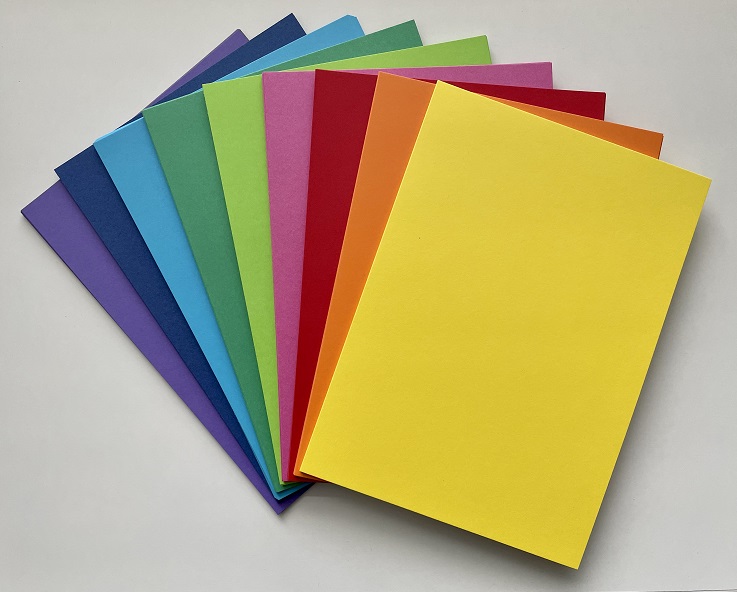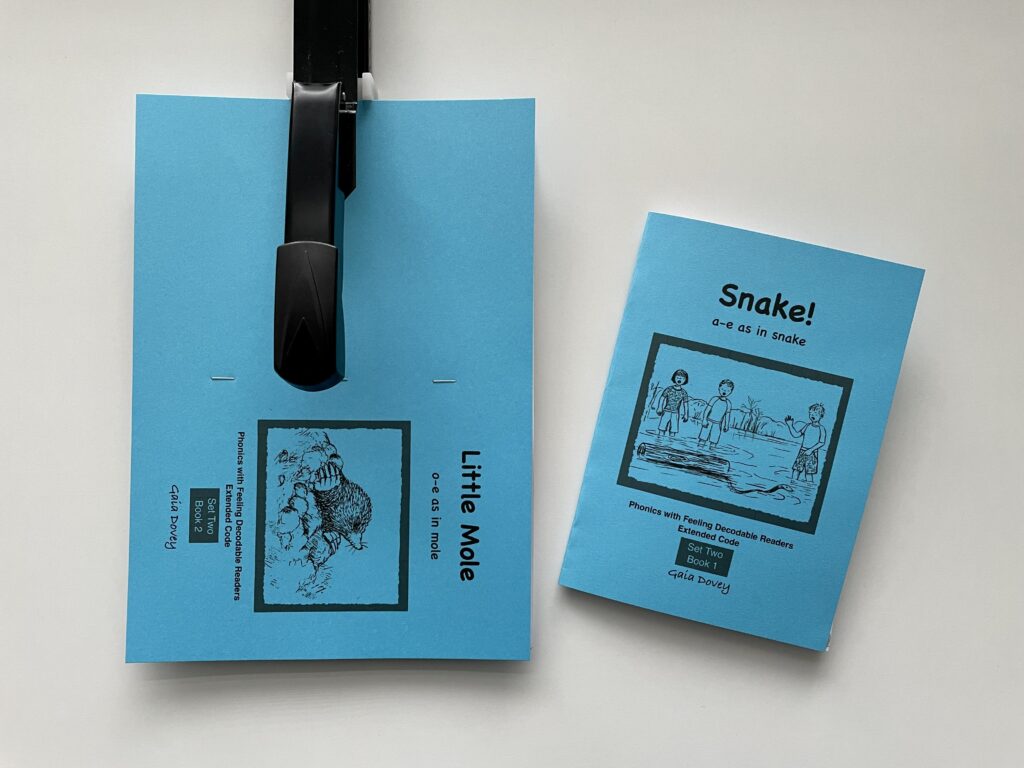The sweaty sounding-out stage builds reading muscle
26 RepliesWe want young children’s lives to be fun, and free of struggle and hard work. We want them to enjoy reading, like we do. So listening to young children reading simple books containing the spelling patterns they’ve been taught in phonics lessons (decodable books) can be quite painful, and a little confronting, for adults.
They grunt and groan and sweat their way through the words. Most of their cognitive horsepower gets used up just extracting the words from the page, and they don’t understand much of what they’ve read. It’s certainly not fluent. It looks and sounds more like hard slog than fun.
However, inside a child’s brain, something extraordinary is happening. They’re creating a new brain circuit linking the visual areas at the back of the brain with the language areas on the left. They’re shifting some tasks usually done on the left side over to the right hemisphere, and repurposing left hemisphere brain cells for reading. See this 2015 blog post for the science behind this.
Lack of understanding of the importance and value of this stage is probably how predictable/repetitive texts got a foothold in early education. I detest them, because they teach children to fake fluent reading by memorising repetitive sentence stems and guessing the rest from pictures. This is a lot easier for adults to listen to, and if you believe reading should be fluent and easy from the start, it sounds like real reading.

If you went to a gym and they told you their weights were made of polystyrene because lifting real weights makes people sweat and grunt and isn’t pretty to watch, you’d walk straight out.
Predictable/repetitive texts are like fake weights at the gym. They make the exercise easier and less painful to watch, but they don’t build reading muscle.
Next time you’re watching a child slowly and laboriously sounding out words in a well-selected decodable book, cheer them on. Don’t wish it wasn’t hard or try to make it easier. All that sweating and striving is because they’re building their reading brain, which is such a powerful and wonderful thing to do, and well worth the effort.
Phonics With Feeling books are now in the Spelfabet shop
11 Replies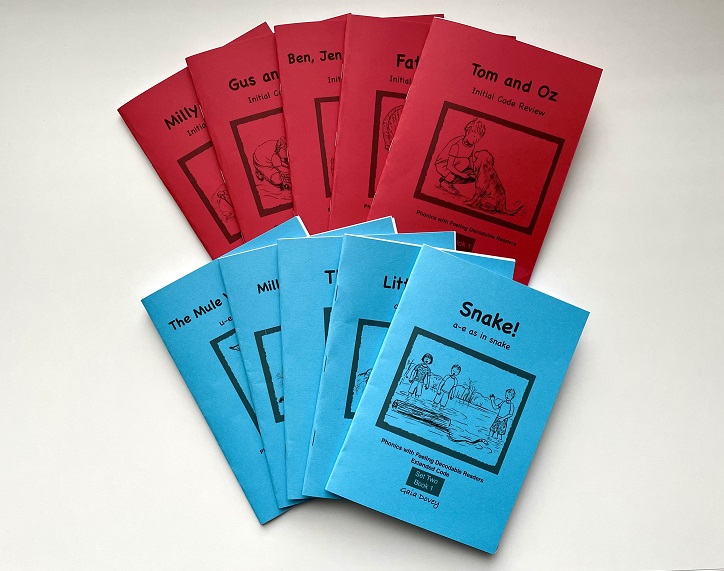
Six sets of the delightful, affordable, download-and-print Phonics With Feeling decodable books by Gaia Dovey are now available from the Spelfabet shop.
You can download and print a free sample book here. It’s about the ups and downs of siblings and pets, sharing and drawing boundaries, and solving problems. One boy I know got to this page…
….and exclaimed, “That’s just like my sister! She always wants to do my things, and it’s very annoying!” He was hooked. The cute illustrations add emotion and humour to the story. Some children might enjoy colouring them in.
Each set of books has a parent/aide edition (print up to 5 copies @ 40c per print) and a teacher/clinician edition (print up to 30 copies @ 20c per print). Not as cheap as the free-till-the-end-of September Little Learners Love Literacy apps (so generous!), but an affordable way to get multiple copies of printed decodable books.
These books are intended to complement, not replace, existing decodable readers. They aren’t for absolute beginners. The Initial Code Review set is intended for children towards the end of their first year of schooling or in Year 1. The Extended Code sets are intended for children in Years 1 and 2. Depending on the child, any of these books can be used with a slightly older learner who needs graphemes introduced at a fairly gentle pace, and heaps of practice. There’s only so many times you can read the same book.
These books have a higher word count than the typical decodable book, so are perfect for consolidation/fluency work. I imagine they’d also be great for extension work for children who can easily read the shorter, simpler books that are at the right level for most of their classmates, but haven’t yet been taught more complex spellings.
The author of these books has a PhD in literature, taught English language and literature, worked in teacher preparation, and originally wrote the books for her grandchildren. It shows. They aim to provide both reading success, and the pleasure and emotional engagement which motivates children to read. Their extra length allows for cohesive narratives, entertaining plots, engaging characters and themes worth talking about.
The Phonics With Feeling books originally had their own website, but it was too much hassle to run (if you’ve ever run a website, you’ll know what I mean). I nearly cried when they disappeared, and contacted the author to find out why. I’m already dealing with the hassle of a website, and she’s really nice, so we decided to join forces.
Only the first six of an eventual eleven sets of books are available now. The rest are on their way. The original books are being reorganised to match the teaching sequence in the Spelfabet version 3 workbooks and other materials, and a few extras are being written and illustrated.
Each set of books is downloaded as a pdf file, which you save to your computer, then print with (preferably) coloured covers. We’re using 220 gsm coloured cardboard for covers, printing the covers first, via the rear feed of the printer. Then we print the rest of the book on A4 paper on the “flip on short edge” setting, then assemble, fold and staple the books with our special book-stapling stapler (probably not its real name).
I hope you like these books as much as I do, and that they make many children excitedly shout things like, “That’s just like my little sister/brother!” while getting enough practice of major spelling patterns to become skilled and enthusiastic readers.
PS on 15/9/21: I’ve started making Wordwall quizzes as follow-up activities for these books, which can be played online for free, but you might need a subscription to access the printable version. The top of the first printable quiz looks like this:
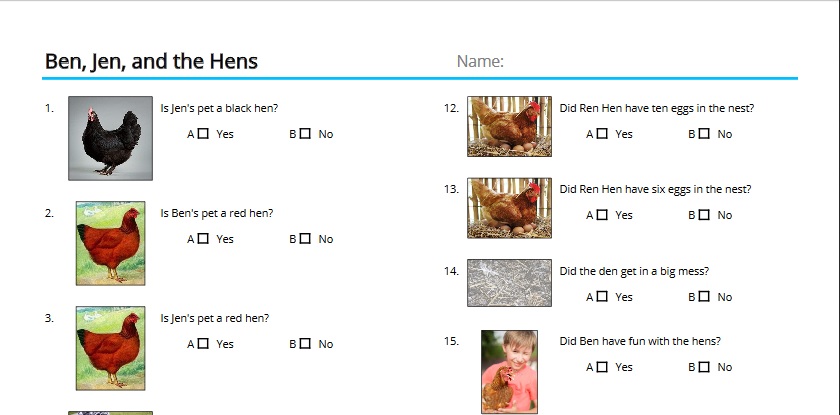
New low-frequency word spelling test
8 Replies
I’ve just finished the new version of the free Spelfabet low frequency word spelling test. Click here to download the file and save it to your computer for printing.
It contains 182 words in five levels, and follows the same teaching sequence as the version 3 Spelfabet workbooks. I hope it’s helpful in deciding where to start in these books, or just in identifying the spelling patterns your learners know, and which need attention.
So you can try the test on yourself first, I’ve filmed myself administering it from the wintry depths of Melbourne’s Lockdown 6.0 (yes, I am masking up and fully AZ vaccinated, the vaccine to get is the one you can get). You just need paper and a pen or pencil for this test, and each level takes between 5 and 15 minutes. Check your answers against the download, or with any walking dictionaries you know, perhaps you’re one.
Please don’t ask kids to do all five levels at once, just start with the level you think they can manage, or Level 1 if they’re in their first year of schooling, Level 2 if they are in their 2nd year and Level 3 if they’re in later primary school years. By mid-primary school most children should be able to have a decent crack at most of these words.
Level 1: 12 minutes
Level 2: 11 minutes. As you can see, my camera’s zoom lens has a mind of its own.
Level 3: 15 minutes (sorry, a bit long, I know)
Level 4: just over 4 minutes (phew!)
Level 5: 10 minutes
If you use the program Sounds-Write and/or the Phonic Books, the teaching sequence in this test is probably familiar. It matches the Dandelion readers Units 1-20, but with extra emphasis on word-building/prefixees/suffixes, then the Dandelion Split Vowel Spellings books (but with more ‘short/long vowels’ and prefix/suffix work and a few extra spellings), then the first set of Extended Code books (one vowel digraph at a time), then the Moon Dogs 3: Vowels sequence (revising one vowel digraph and adding a new one). I’m still working on the later levels, and will add these to the test over time.
The printed test is set out in columns with the target sound/spelling at the left, then the word, then a definition and then an example sentence. The last three levels also include words with analogous spellings e.g. for newly-minted it-word ‘rona‘, the analogy words might be ‘sofa’, ‘coma’ and ‘soda’. I won’t put any of the actual words on the test in this blog post, so they’re all fresh to you when/if you try it.
Please note that this test should not be used as a substitute for formal, standardised tests with norms, percentiles etc., though of course schools could gather data from it and work out their own local norms. It’s intended as an exploratory tool to shed light on what learners know about spelling, and help adults decide what to teach next.
I’d love to know what you think of this test, so please leave any feedback or suggestions in the comments.
Introducing Clever Caitlin’s phonics playing cards
14 Replies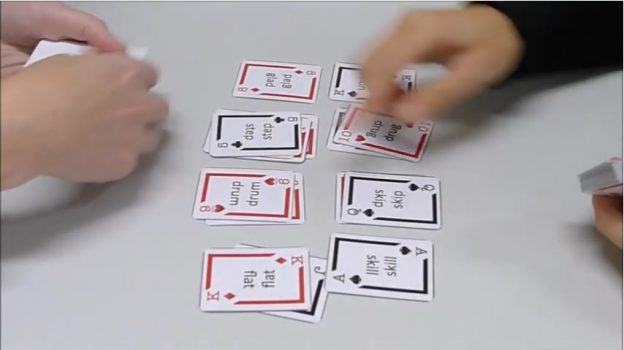
This year I have some excellent new colleagues, and one of them, Caitlin Stephenson, is queen of making therapy fun for kids.
She grew up playing cards with abundant siblings, and came up with the idea of phonics playing cards.
For an affordable, fun, social, portable phonics activity that can be tailored to a range of ages and abilities, they’re hard to beat.
Caitlin and I have so far collaborated to create over 50 decks of downloadable phonics playing cards, and so far I’ve put 30 of them in the Spelfabet shop. (April 2020 update: there are now 57 decks in the shop, I’m about to add another dozen, and there are still a few more to come). (more…)
Running Records are an uninformative waste of teacher time
31 Replies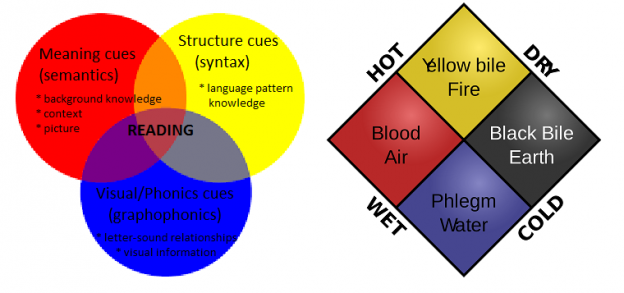
I’ve been doing lots of assessment of my clients’ skills in the following areas lately:
- Receptive and/or expressive language
- Articulation
- Phonological awareness
- Phonological/auditory memory
- Rapid Automatised Naming
- Word and pseudoword reading accuracy and efficiency
- Spelling.
These allow me to identify problems in their reading and spelling systems, and work out how significant/severe these problems are, and what to do about them.
I use the robust, evidence-based Simple View of Reading (SVR) to guide my decision-making.
Wherever possible, I use valid, reliable, standardised tests for assessment. However, I once administered a Running Record to a child with selective mutism, because she would talk to me, but not other adults at school (we were working on it). Her class teacher thus asked me to administer the assessment required by the school, which (sad face) used a multi-cueing model of reading and a text level gradient approach to reading assessment. (more…)
Free early phonemic awareness, phonics and handwriting workbook
10 Replies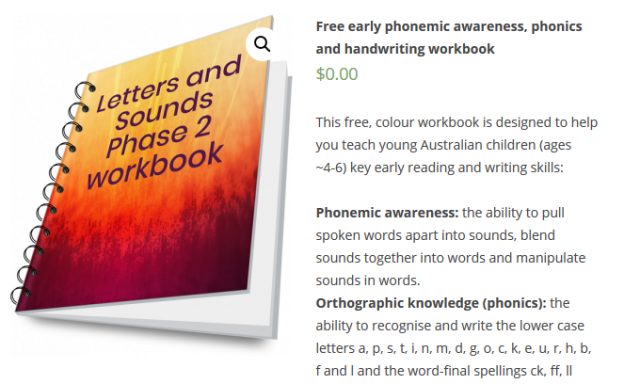
Last week, I read my state education department’s booklet advising parents on how to help children with literacy and numeracy. I understand it will be in the Prep bags given to all Victorian children starting school in 2019.
I was, frankly, appalled. The booklet mentions phonics only once, saying onscreen phonics games improve reading and “letter sound awareness”, whatever that is. It doesn’t mention phonemic awareness or handwriting at all.
A ton of scientific research has shown that phonemic awareness and phonics are key ingredients in getting literacy beginners off to a good start, along with work on vocabulary, comprehension and fluency, and that writing letters helps you remember them. (more…)
Free Learning Difficulties Including Dyslexia webinars
8 Replies
La Trobe University and the Victorian Department of Education have this year collaborated to run workshops across Victoria about learning difficulties including dyslexia. The workshops have been available to teachers and other Department of Education staff.
The information from these workshops is now being made available free online via YouTube as webinars. Wow. Amazingly generous of both the University and the Department, since most professional development of this type and quality is paywalled. So thanks to all involved.
The webinars are presented by Dr Tanya Serry from La Trobe University, and the workshops on which they are based were developed with Professor Pamela Snow, Ms Emina McLean and Assistant Professor Jane McCormack also from La Trobe, and Dr Lorraine Hammond from Edith Cowan University in WA. (more…)


